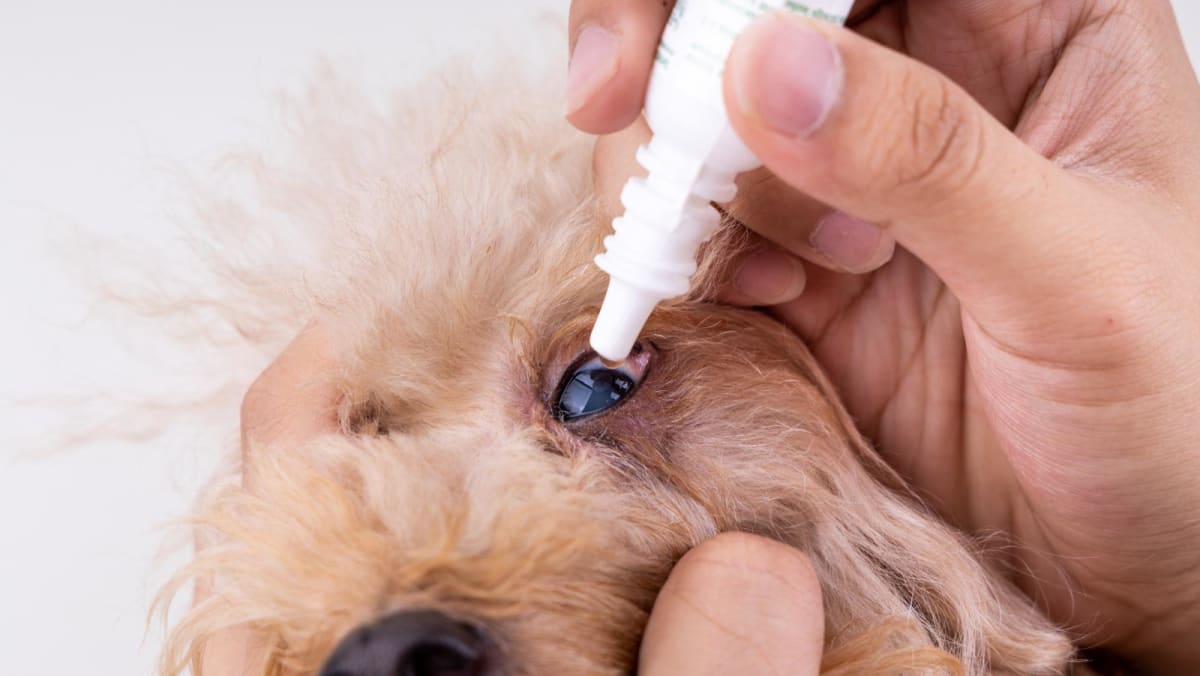Vets, researchers dispute claims of lanosterol eye drops curing cataracts in dogs


SINGAPORE: Veterinarians and pet owners are raising concerns over claims that off-the-shelf eye drops could cure cataracts in dogs.
The eye drops, which contain the ingredient lanosterol, are readily available online and in veterinary clinics in Singapore and they are being marketed by various brands as an effective cataract treatment.
Cataracts occur when the lens of a dog's eye becomes cloudy, blocking light from reaching the retina, potentially leading to blindness.
Researchers and vets told CNA that using the eye drops could delay surgery, which they said is the only treatment option for cataracts, and there is no solid scientific evidence supporting the efficacy of lanosterol eye drops in reversing the condition.
The popularity of lanosterol, a chemical compound, as a potential cataract treatment stemmed from a 2015 study suggesting it could dissolve cataracts.
However, Dr Sara Thomasy, a professor at the University of California, Davis, told CNA that the study used a “subjective grading scheme” and lacked robust scientific validation.
Dr Thomasy, who is in the university's department of ophthalmology and vision science, also pointed out that lanosterol has poor solubility in water, limiting its ability to penetrate the eye and reach the lens where cataracts develop.
Further research also refuted the effectiveness of lanosterol, said Singapore-based veterinary ophthalmologist Gladys Boo, adding that a 2019 study demonstrated that the compound “failed to restore lens clarity”.
Despite these findings, lanosterol-based eye drops remain widely available under brand names such as Lanomax, CatarClear and LumenPro, with prices ranging from S$87 to S$159 (US$65 to US$120) for a 10ml bottle. They are sold on e-commerce platforms like Amazon, Lazada and Shopee.
“DID NOTHING TO CLEAR THE CATARACTS”
CNA spoke to four pet owners in Singapore who used lanosterol-based eye drops, all saying the products did not improve their dogs' conditions.
Ms Audrey Bong, who is in her 40s and works in a professional services firm, purchased lanosterol eye drops from her vet in 2020.
“At that time, I did have my suspicions because the vet's assessment of my dog's eyes seemed too simple,” Ms Bong said. “(There was) no special eye examination, no documentation.”
In mid-2021, after she had used the eye drops for a while, she noticed a “visible white spot” in her dog's eye and decided to seek a second opinion. This other vet confirmed that the eye drops “did nothing to clear the cataracts”.
By then, her dog's condition had worsened, requiring more extensive surgery.
Recent Posts
Pet of the Week: Meet Jeeves
Jeeves (Cullman County Animal Shelter) CULLMAN, Ala. – Say hello to Jeeves, a striking 1‑year‑old…
Great Plains SPCA offering free microchipping for pets
MERRIAM, Kan. (KCTV) - Great Plains SPCA is encouraging pet owners to be proactive when…
Owner banned from keeping pets for 10 years after dog left in this horrific state
Female bull breed Mia is now unrecognisable after she suffered horrific neglect15:04, 27 Jun 2025Updated…
Dog-friendly society on hunt for more off-leash space in Greater Victoria
CRD DOGGS was formed after Saanich removed 90 per cent of its off-leash trail areas…
Video shows Myrtle Beach family’s beloved dog’s last moments before alligator attack
MYRTLE BEACH, SC (WMBF) - A family along the Intracoastal Waterway is grieving after Ring…
Quarter of pet owners underestimate this one thing
Introducing a new pet to your family is an exciting journey. Whilst some pets get…


